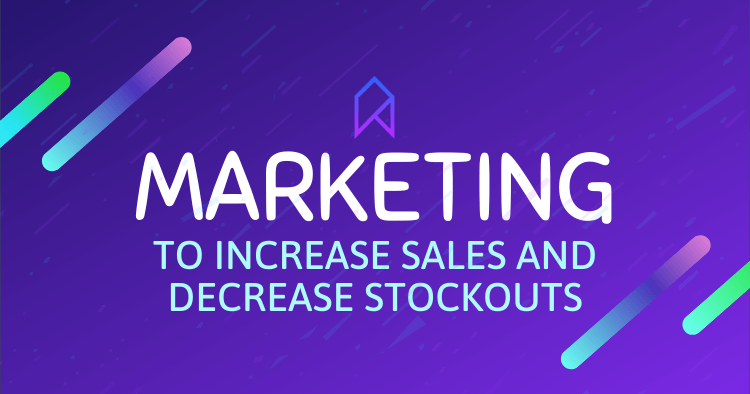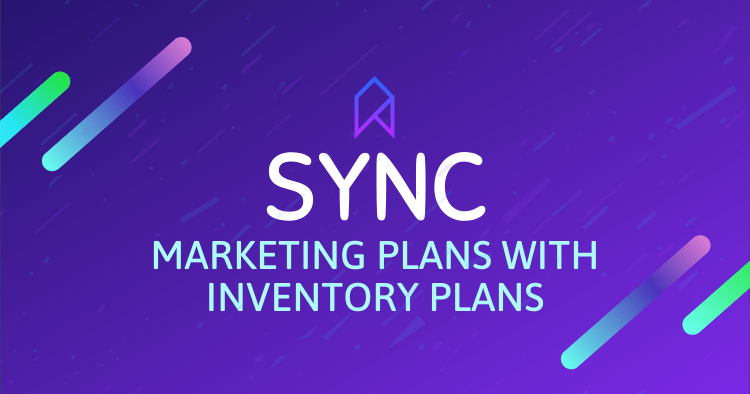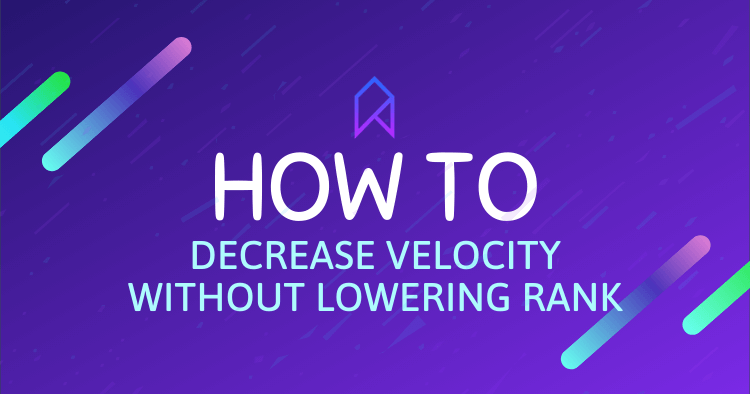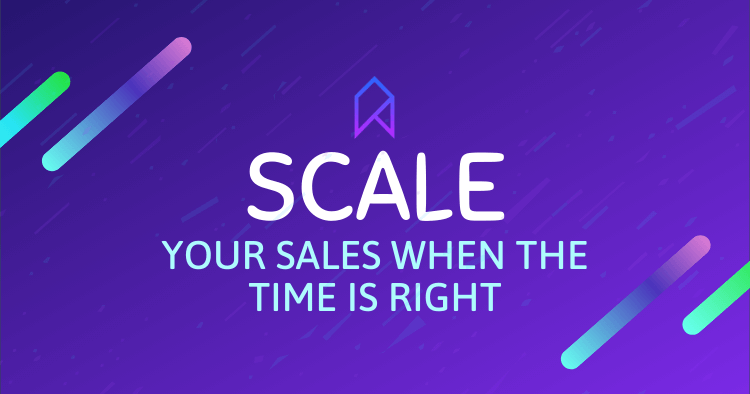
Marketing On Amazon
Increase Sales and Decrease Stockouts
I missed the days on Amazon when it was easy to choose marketing tools and make sales. Almost anything seemed to work. Just hit the marketing lever and sales popped out, right?
Today though, there are thousands of marketing tools for various ad types on a plethora of platforms. Plus, add to this the increased marketplace competition, and you quickly realize it’s not a walk in the park anymore.
The one thing that has remained unchanged is that marketing on Amazon is still essential. You just have to approach it more efficiently.
You just can’t throw money at marketing and hope. You need to know how to squeeze out as much profit as possible each time you press the marketing lever to gain an advantage over the competition.
That’s what we’ll be discussing in this post – how marketing on Amazon, margins, and inventory work together to maximize profitability.
In this Marketing on Amazon guide, we’ll take a look at:
Get Marketing On Amazon Right

You want marketing to benefit your business, not to injure it, right? Yet, if not appropriately planned, it will do precisely that.
Most sellers don’t think about it, but a marketing campaign’s cost is not the only cost to consider when you’re crafting an Amazon advertising strategy.
When you look at the bigger picture, you see that seemingly unrelated fees can completely change a campaign’s impact. For example, the way marketing impacts your inventory.
Sure, the goal of marketing is to increase sales. However, if increasing sales will stress your Amazon inventory, you’ll have to source more of it. Thus, you now have a whole new set of fees related to sourcing.
The added fees are why you need to consider all the data, especially regarding minute expenses such as inventory, shipping, and transfer costs, as well as ad spend and coupon code costs when you’re crafting an advertising strategy. Once you do this, you might find that a particular campaign may be losing you money.
With some SKUs, you may throw many promotions and advertisements at them, but they might have relatively low profitability after considering all the costs. With others, you may have some degree of profitability, but not enough to reinvest it into the product and other products for scaling and expansion, or even the cash to pay yourself. At that point, you’re just churning dollars.
Here are some more tips to help you avoid picking an inefficient Amazon marketing strategy:
Examine how your ad expenditure impacts your profit margins
An essential thing to consider is the impact of your ad expenditure on your margins. If it’s around 6-12%, it’s probably alright, but if it’s 15-20%, that may be an indicator that you’re spending too much on ad spend and other expensive and not profiting enough. Don’t just factor in data across your product line; consider individual SKUs. Add all the little fees that you may think are insignificant. Only then can you get an accurate picture of the status of your offerings.
Track your ACoS as well as your True ACoS (TACoS) percentages
An important metric to evaluate marketing is your ACoS percentage or Average Cost of Sale. It’s a metric that measures the performance of a Sponsored Products campaign on Amazon. You calculate it by dividing the ad spend by the sales revenue made by your ads.
True ACoS is ad spend divided by all sales revenue for that SKU. It is looked at because ad sales help contribute to organic ranking increases, so it should be studied as a key metric to your PPC campaign’s success. Aim to get your ACoS and TACoS low and your revenue high.
Use velocities to measure the performance of your SKUs
Filter all your SKUs by adjusted velocities to gauge their performance. You should have a make/break target for the sales of each product. If a SKU hasn’t risen above a specific velocity that makes it profitable, get rid of it. If you have an item that you can’t sell through for six months at a time, that’s six months of capital you could have put to better use and six months of storage fees eating away at your profit.
Don’t let MOQs hurt your bottom line
With certain products, you may have a Minimum Order Quantity set by your supplier. However, if that item just isn’t profitable, say, based in part on the monthly storage fees, the MOQ makes no sense. Talk to your supplier and negotiate a better deal. If your MOQ stops you from maximizing your profit, you need to either renegotiate or cut the product from your offerings.
Don’t just keep churning money on SKUs without knowing the numbers – you might be harming your bottom line.
Sync Marketing and Inventory Plans

Say you’re planning a new marketing campaign that will net you a 20% increase in sales. That sounds great! However, if your inventory can’t support the higher velocity required for those sales, you’ll end up stocking out quickly.
Stockouts harm you in two ways.
- First, it negatively impacts your Inventory Performance Index on Amazon, possibly leading to your account facing restock restrictions.
- Secondly, you spent extra money on the marketing campaign to result in the same sales figures as you would have without it yet with less profit due to ad costs.
Even if you can find a way to increase your inventory capacity to support the new campaign, do you have the money to spend on advertising or acquiring more goods? Your cash flow determines what you can and can’t do. Thus, all three departments must coordinate with each other.
As you can see, no part of a business works independently. Everything must run in tandem with everything else. This statement is especially true for the three central domains – marketing, inventory, and cash flow. You must connect your marketing plan to your inventory plan and both of those plans to your cash flow plan.
Does all of this sound like a lot of manual work? Use our Amazon inventory management software to sync up and make things easier.
By knowing your cash flow, you can figure out a marketing strategy within your budget. By knowing your inventory, you can see when you’re about to stock out and adjust your velocity accordingly.
However, lowering your sales can be a tricky thing to do. It may affect your ranking, so planning well ahead and running the numbers on how future marketing affects your inventory and cash flow is the better option.
How To Decrease Velocity Without Lowering Rank

Data is a seller’s best friend. By tracking Amazon inventory and sales data for your products carefully, you can predict stock outs before they happen. If you know a stock out is approaching, here are some questions you need to ask yourself.
- When are you going to be running out of stock?
- How much time is there until your next order or transfer arrives?
- How much do you need to slow your sales down?
- Do the math and calculate the answers to all these questions.
When dealing with stockouts, having an inventory timeline can be invaluable. Look at your sales patterns to quickly figure out when you’re going to reach zero inventory and the gap until your next transfer. Plug different numbers into your system to see what works.
If you usually sell ten units a day, would selling eight units help you avoid running out of stock? Play around with the numbers and set a target limit for sales. It is not advisable to slow down sales unless you avoid a short stockout and can quickly and easily bounce back without much loss in ranking.
Once you’ve figured out answers to the above questions, you have two tools to lower your sales.
- The first is to turn down advertising.
- The second is to increase the price.
Increasing the price of a product must be done with caution. You don’t want to lose your Buy Box with a sudden price hike. The way to go about it is to raise your price slowly and incrementally.
If you have any coupons or deals, remove them for a few days. Promotions can be a valuable tool to increase your conversion rate, but an increased conversion is pointless if you don’t have stock to sell.
Even experienced eight-figure sellers struggle with stocking out and lowering their velocities. They, too, get caught off-guard by stock outs.
The most important thing you need to run a business properly is to look at the data. Keep your nose to the grindstone and observe the numbers. By staying tuned to your inventory timeline, you’ll ensure nothing catches you by surprise.
Plan a Sound Amazon Marketing Strategy

One of the biggest mistakes sellers make when it comes to marketing is launching a ton of products and campaigns simultaneously. It’s a very crude, brute-force way to go about marketing. It is difficult to control and often inefficient.
A better, more elegant approach to advertising is to work slowly but steadily. You can first try creating an automatic campaign, then build upon that with a manual campaign using keywords that did well in the auto campaign, then add a breakout campaign targeting top performers. Slowly, you’ll have an army of effective campaigns.
This approach is far better as it allows for fine-tuning and granular control over your strategy. It also gives you more flexibility. Rather than just launching a bunch of campaigns and letting them be.
Take some time out each week to review your campaigns’ performances and see what’s working out. Look for opportunities to save money and expand. Optimize each campaign to make sure you’re getting the most out of it, and if something isn’t giving you what you want, cut it off right away.
By taking this approach, you avoid wasting money on useless strategies. Don’t be too aggressive when it comes to marketing on Amazon. Instead, make steady and composed decisions based on live data.
Take Advantage Of Amazon Opportunities

With thousands of opportunities popping up and fading out every minute, it is not too hard to get overwhelmed. Start by acquainting yourself with the different kinds of marketing campaigns out there.
To make sure you’re making the most out of marketing, you must first understand the different types of campaigns you can use based on the consumer buying cycle.
- The first step of the buying cycle is awareness. Based on this, you can launch discovery and research campaigns designed to attract shoppers and audiences.
- Next, you can break these out into individual campaigns targeted at converting buyers who are enticed but are yet to make a decision.
- Lastly, you can have campaigns targeted at regular buyers who have bought from you before.
Here are some top tips for you to make the most out of every marketing opportunity:
- Have one target per campaign. It helps you better optimize advertising for that particular target.
- A beneficial strategy you can follow is the copy-rinse-repeat strategy. It involves taking a brand ad that’s been performing well and copying the search terms with the most relevance. You then put those into Headline Search Ads and use them as keywords so that the headline in the ad exactly matches the keyword used to find it. Just look at the Search Terms Report and use the best-performing terms to align your ads with your audience.
- Sponsored Ads are prime resources for keywords. By harvesting terms from your Search Terms Report, you make sure that your ads quickly catch your targets’ attention.
- Another opportunity that you can take advantage of is copywriting. Chinese sellers write a large portion of ads on Amazon, and they lack good grammar and style. You stand out from your competitors by writing with correct and fluent English copywriting that is enticing.
- Make sure you’re making the most out of all the different targeting categories out there. You may think a particular category is performing well, but another may be better and have a lower ACoS. You won’t know until you experiment and test out different categories. Do some research and use category targeting to build a wider audience.
The most important practice you can adopt is consistency. Marketing on Amazon requires persistent effort over a long period. You must regularly update yourself on your campaigns and how they’re performing to have quick reactions and achieve peak efficiency.
It can get quite dull in all honesty because often, there will be nothing for you to do but watch. However, you must tolerate the unexciting to avoid spending money where you don’t need to and ensure you place your transfer orders on time.
Scale Your Sales When The Time Is Right

There are thousands of e-commerce platforms out there. While expanding to another platform can seem tempting, approach the idea with a degree of caution. One horrible mistake could topple your vision for the future, along with what you currently have. Let’s discuss how to decide if it’s the right time to scale.
The first thing you need to do is take a good look at your business. Scrutinize your cash flow. Do you have the money to scale? Do you have the capacity to scale? Consider the extra effort that would be required by adding another platform. If your empire consists of just you and a couple of family members, ask yourself if you can make the time commitment selling on another platform would demand.
Examine what another e-commerce website would offer you. Would you get a high enough volume of sales to justify the addition? Does it make a significant enough impact to be worth it? Could you get the same effect by expanding on Amazon itself?
Answering all these questions might give you more clarity on the matter of scaling. Remember, until it makes perfect sense to start selling on another platform, stay plugged into the Amazon atmosphere. There’s plenty of room for growth within it. However, if you’re ready, able, and willing, make a plan and go for it. Sites like Shopify offer integration with Amazon for fulfillment. They might be an excellent place to start.
What’s Your Next Move?
Marketing can make or break your business. It is undoubtedly a complicated and tricky field, but you can avoid making common mistakes by following the advice mentioned above. One of the most effective ways to improve your bottom line is to cut out unnecessary expenditures on campaigns that don’t work and design your marketing strategy to be flexible and dynamic.
Of course, there are other optimizations you can make, such as those to your listings and storefronts. Remember, well-crafted bullet points in your listings can be the difference between having just another product on the market and having the best-seller.
Ultimately, whatever you do – just make sure to act on “good data” and not on “gut feel”. The best performing sellers are always those who carefully track and respond to the numbers.
Want to factor your future marketing plans into your inventory planning? . Use our SoStocked.com to maximize profitability and avoid stocking out.
 Start Your Free Audit
Start Your Free Audit